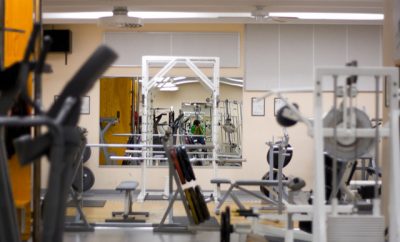
Crime
Continual Mass Shootings Prompt Tactical Changes Within Law Enforcement Community
After the Columbine school shooting in 1999, some schools cancelled all classes. Students around the nation observed moments of silence in honor of the 12 students and one teacher who lost their lives in the massacre. Headlines covering the event did not seem to subside for weeks; however, mass shootings have now become commonplace, and most hardly think twice when we hear of yet another attack.
Since these shootings are now regular occurrences, police need to keep updating their response methods. During the Colorado attack, police did not enter Columbine high school and attempt to stop the shooters for at least 30 minutes. The reasons behind the delay can be attributed to their training, which was focused on containing the situation and waiting for SWAT team members to arrive and respond. These tactics; however, are intended to be used in hostage situations, which Columbine was not. Naturally, the delay of the SWAT team caused widespread disapproval and quickly led police departments to realize the need to lower their response time in the event of future attacks. During the shooting at Columbine high school, most of the students were shot while the police waited outside for the SWAT team to arrive.
SWAT is typically too slow. Very few cities in America can field a full SWAT team in less than 30 minutes.
– Mike Dorn, former school police chief and head of Safe Havens International, a nonprofit school-safety organization.
The nation averaged five active-shooter situations annually between 2000 and 2008. Since 2009, that number has tripled, according to U.S. Attorney General Eric Holder. The U.S. Department of Homeland Security defines an active-shooter as “an individual actively engaged in killing or attempting to kill people in a confined and populated area; in most cases, active shooters use firearm[s] and there is no pattern or method to their selection of victims.”
Updated Tactics, New Equipment
Officers on the site of an active shooting can no longer wait around for reinforcements as they did unsuccessfully at Columbine in 1999. With the increase in shootings nationwide, cops are taking action to increase the effectiveness of their tactics.
Long Island police departments have changed their tactics to respond faster to mass shootings, and civilians who work at potential targets such as schools and shopping malls are being taught how to help. The new approach to active-shooter incidents, adopted by New York police and law enforcement across the nation, provides responding officers with specialized training. Instead of waiting for SWAT teams, officers are being trained to run toward the shooter(s) and remove the threat in order to save lives. Today the goal is rapid response. Most police departments provide cops with extensive active-shooter training and equip them with high-powered rifles.
If someone in the building is shooting, and you’re the first one there, you’re going in.
– Indiana State Police Trooper Aaron Gaul
Police officers at the scene of an active shooting are instructed to get to the shooter and end the situation. The priority now is doing so as quickly as possible, which leads to some controversial tactics including not stopping to help wounded victims.
If we stop and try to treat and help every person, we’re losing seconds where seconds can cost lives.
– Indiana State Police Sgt. Trent Smith
The Role of the Public
In addition to their extensive and updated training, police departments are reaching out to civilians to seek their help during shootings. On Long Island, the Nassau Police Department is collaborating with employees of public venues that face a greater risk of an attack in order to revise their emergency plans. Police departments across the nation are holding seminars to better educate the public on how to react in the event of a shooting. Individuals inside the building are generally told to evacuate at once and call 9-1-1 once they are at a safe distance. If leaving the building is not possible, they are told to hide in a quiet place until the danger dissipates.
A Joint Effort
Cops are not the only ones receiving specialized training for active-shooter situations. Emergency responders are taking part in new exercises designed to increase their response time to aid victims. Once again referring to the tragedy in Colorado in 1999, EMTs cite as a concern the length of time victims waited to receive necessary medical attention. Just last week, police and firefighters in Kansas City, Missouri demonstrated a new plan to respond to shootings during a practice drill. In the event of a school shooting, police would enter first. During the training exercise, police and firefighters showed how that response plan is evolving. The two departments have planned their response tactics to the last detail. To ensure that officers are prepared for handling school shootings, precincts will hold staged events at schools from time to time for practice.
Are These Changes Making A Difference?
In January of this year, there was a shooting at a grocery store in Indiana that may have ended substantially worse if not for the quick thinking of the officers responsible for dissipating the situation. There is still disagreement, however, among law enforcement professionals as to whether or not cops should confront a shooter or wait for backup.
The string of school shootings in recent years has demonstrated that these incidents really can occur anywhere. As scary as this sounds, the mentality that no school is completely safe is the one that needs to be embraced. With better preparation and modern police tactics, perhaps the upward trend in the number of school shootings will begin to reverse.
Featured image courtesy of [t i g via Flickr]








Comments